5 Easy Steps to do Handstand for Beginners – Fast
For every calisthenics beginner or athlete, the most impressive skill that they want to learn first is the handstand.
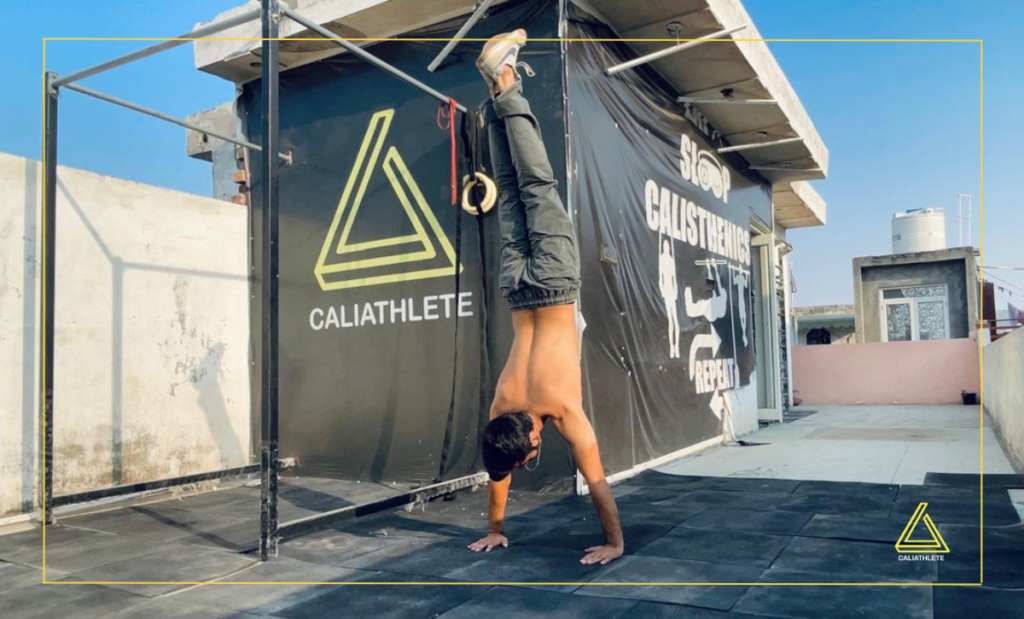
Handstands are not only an impressive skill also display of strength and balance but also a fundamental skill in the world of calisthenics. They can enhance your core strength, shoulder stability, and overall your body control. If you’re a beginner looking to take your first steps toward achieving a handstand, you’re in the right place! This guide will break down the process with easy steps for a beginner who wanted to do handstand.
Before starting handstand, give 10-15 minutes of stretching and warming because a proper warm-up helps reduce the risk of injury, improves performance, and increases your overall range of motion. Here is best Streching and warm-up routine you can follow
15 Min Full Body Warm up and Streching Routine
Step 1:- Build Your Core and Shoulder Strength
Shoulder strength and core strength are important parts of a handstand. Because all our bodyweight is on our shoulders, strong shoulders also provide the necessary support to maintain proper positioning while inverted, minimizing the risk of strain or injury. Also, a strong core is for perfect balance.
Here is Some Basic Exercises for Building Core Strength
- Plank
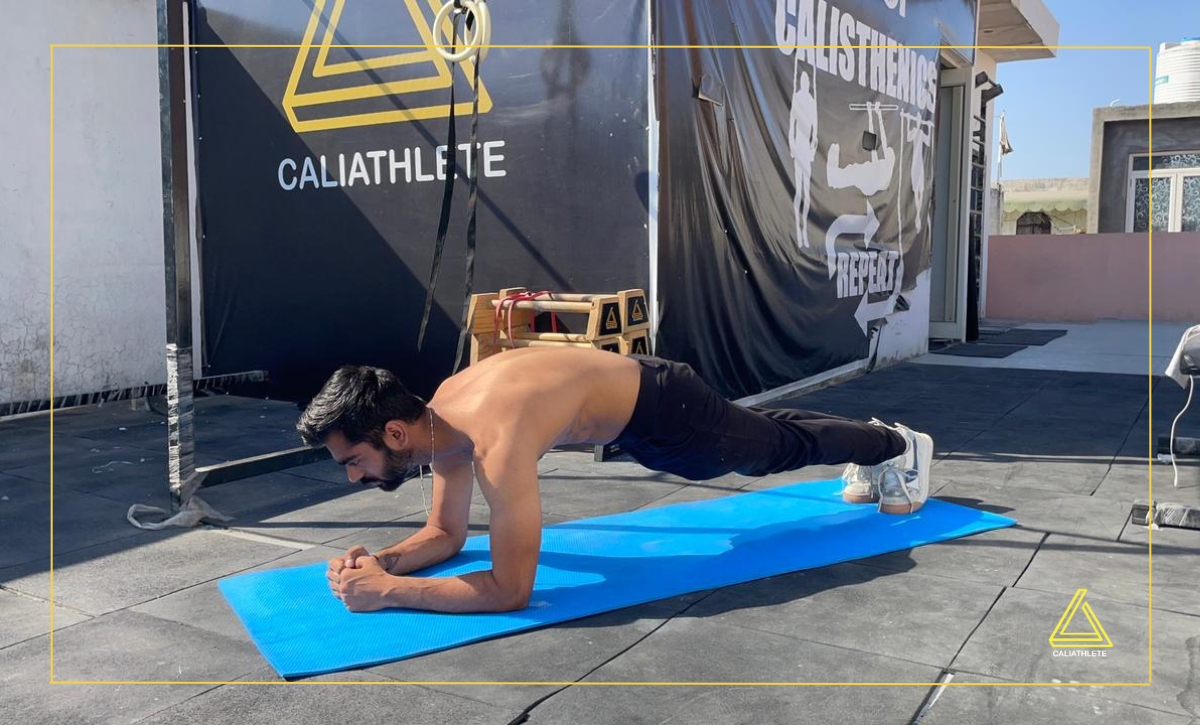
Best Exercise for building strength for core set goal for hold 50-60 second with 3 reps
2. Hollow Body Hold
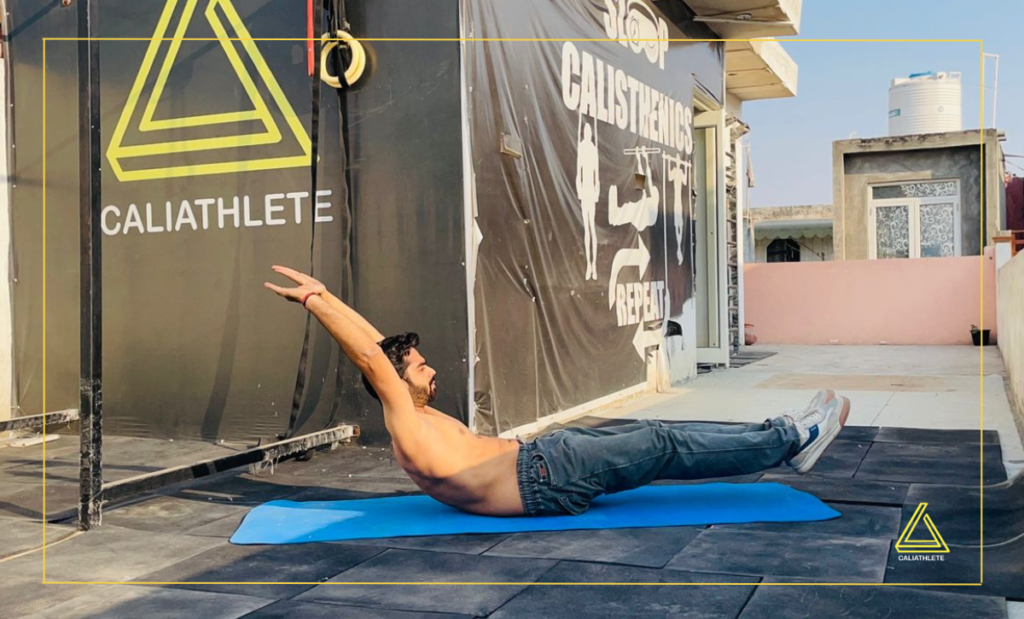
Hollow Body Hold is an essential exercise for building core strength for body control, especially for calisthenics movements.
Here is Some Basic Exercises for Building Shoulder Strength
- Pike Push-up
Pike push-up is a great bodyweight exercise that targets the shoulders, Triceps.
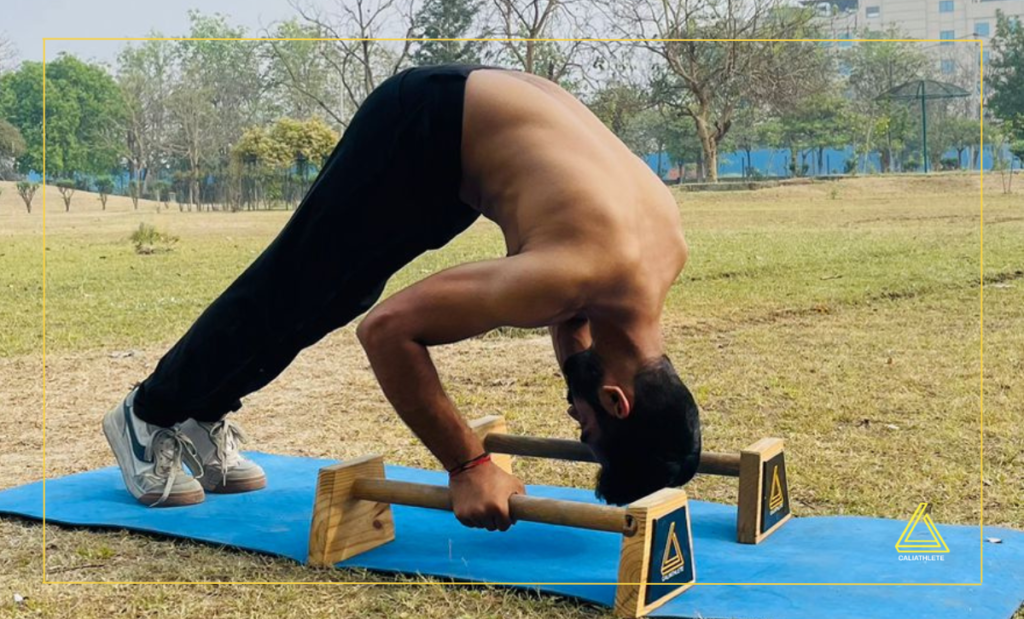
2. Shoulder Taps
Enhances shoulder stability and balance while building strength. It also engages your core.
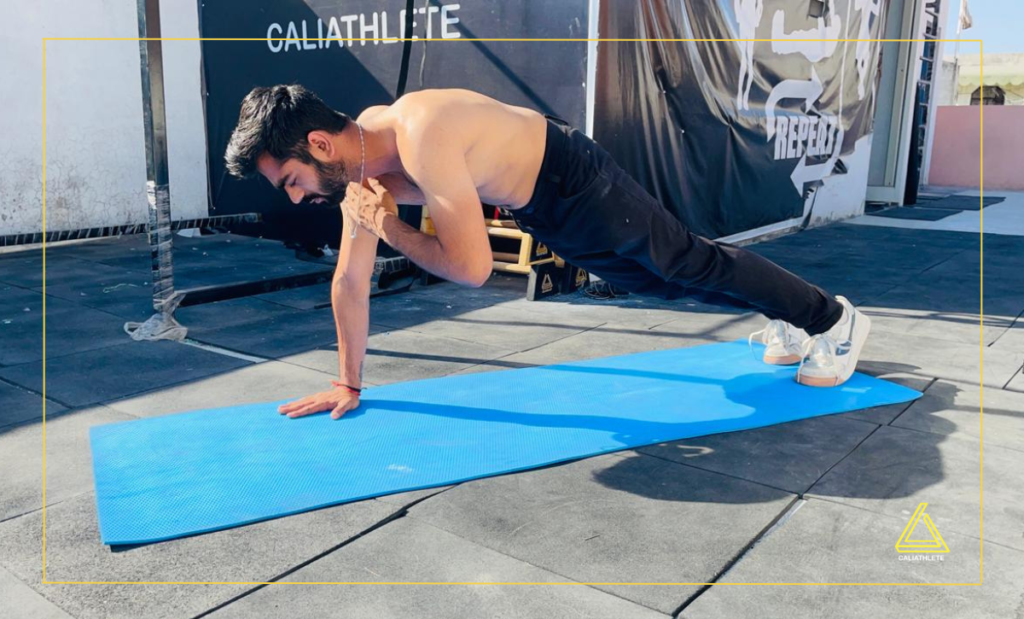
Step 2:- Tuck Handstand
A tuck handstand is essential for mastering handstands as it strengthens core engagement, enhances balance by lowering your center of gravity, and serves as a foundational step for advanced variations like straddle or full handstands.
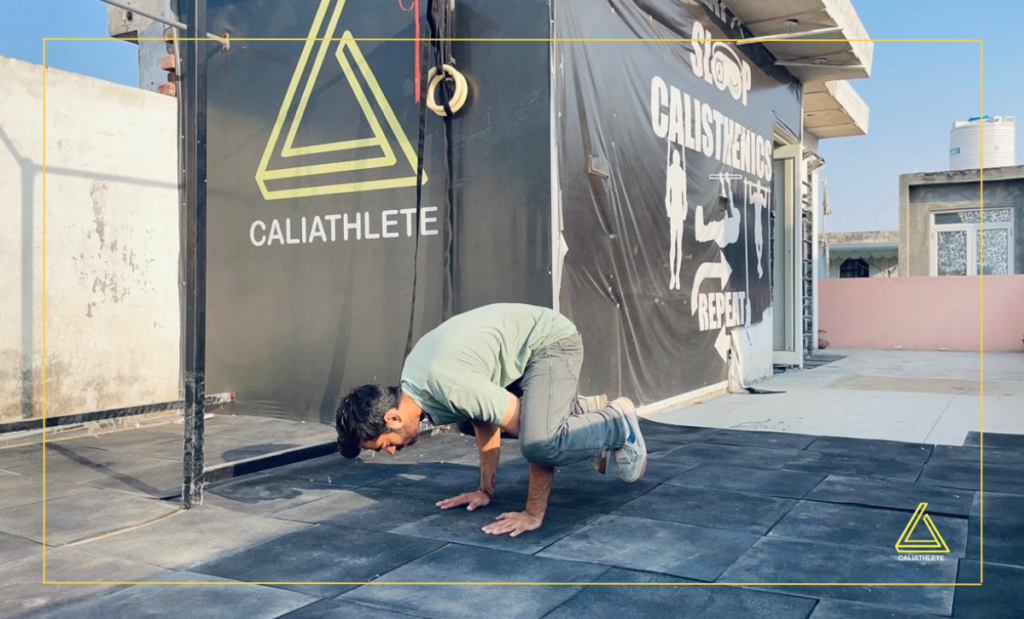
Step 3:- Kick Up
After Building shoulder, and wrist strength the Second step is Kick up. kick up Prepares You for the Handstand Alignment, Helps You Get Upside Down Safely and body control and momentum. For beginners, the kick-up helps build confidence . By learning the kick-up, you can approach the handstand with less fear. This method ensures a smoother and safer way to do the handstand.
Steps to do Kick up
Lunge Position: Stand with one leg forward and the other back, arms raised overhead.
Hand Placement: Lean forward, bend at the hips, and place your hands shoulder-width apart on the grounds
Kick Up Back Leg: Kick your back leg up toward the ceiling while keeping it straight.
Push Off Front Leg: Simultaneously push off with your front leg, bringing both legs together overhead.
Find Balance: Engage your core and shoulders to stabilize in the handstand position.
Exit Safely: Lower one leg at a time back to the ground or cartwheel out if necessary.
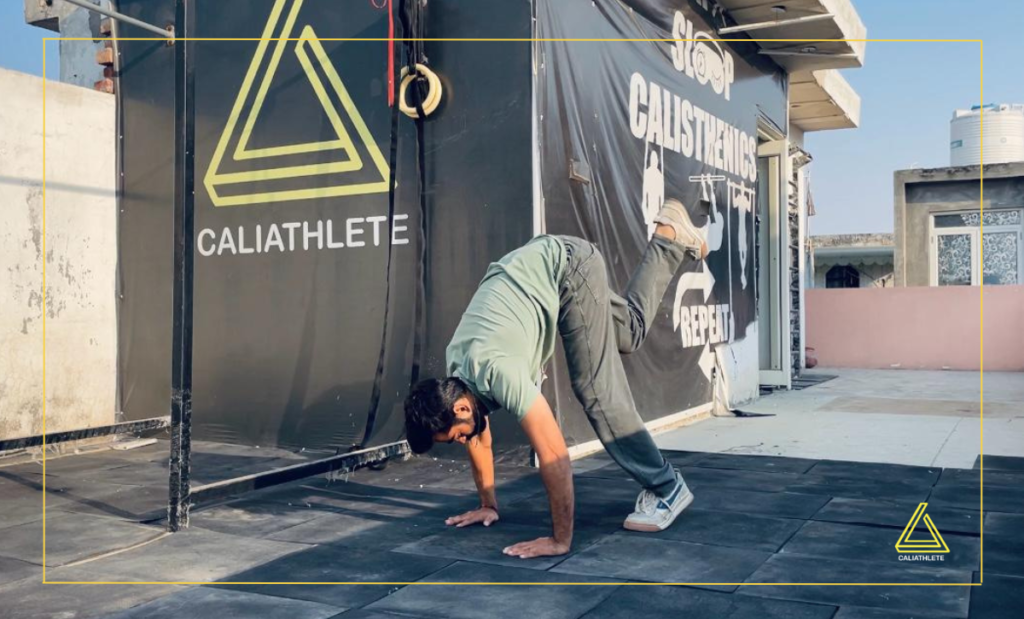
Step 4:- Wall Handstand
By practicing kicks, your fear of falling may have reduced a bit and you may also have learned to control your body’s balance and momentum a little. Now we want to take the journey to another level, so for this let’s go to the third step which is wall handstand.
There are two options to do wall handstand
Face the Wall: Start in a plank position with your feet touching the wall. Slowly walk your feet up the wall while walking your hands closer to the wall. Keep your core engaged, and aim to get your chest as close to the wall as possible.
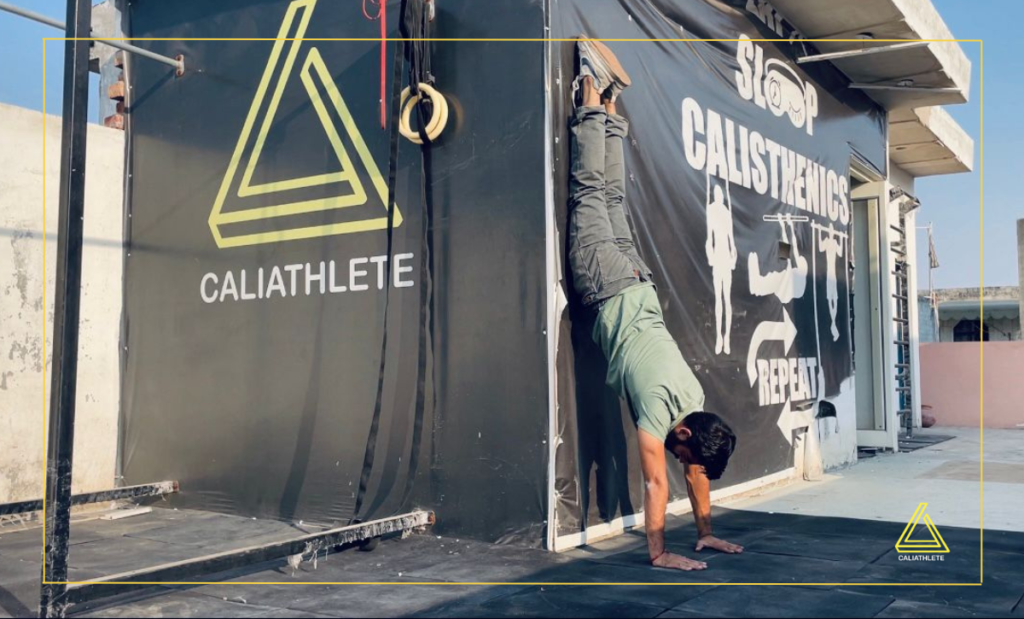
Back to Wall : Face away from the wall, kick up into a handstand with your back against the wall. Use the wall for balance and support while focusing on maintaining a straight line from your hands to your toes.
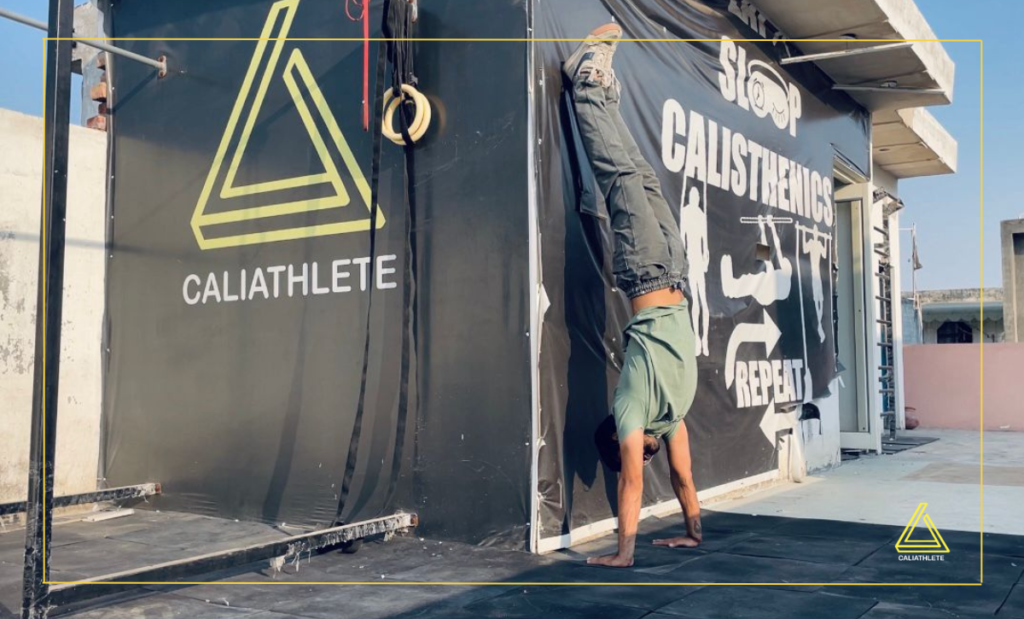
Step 5:- Handstand Balance on Floor
After completing all 4 steps, the last step is let’s practice on the floor. But a lot of things keep in mind. The first one is safety. Practice on a soft surface, like grass, a gym mat, or a padded floor.
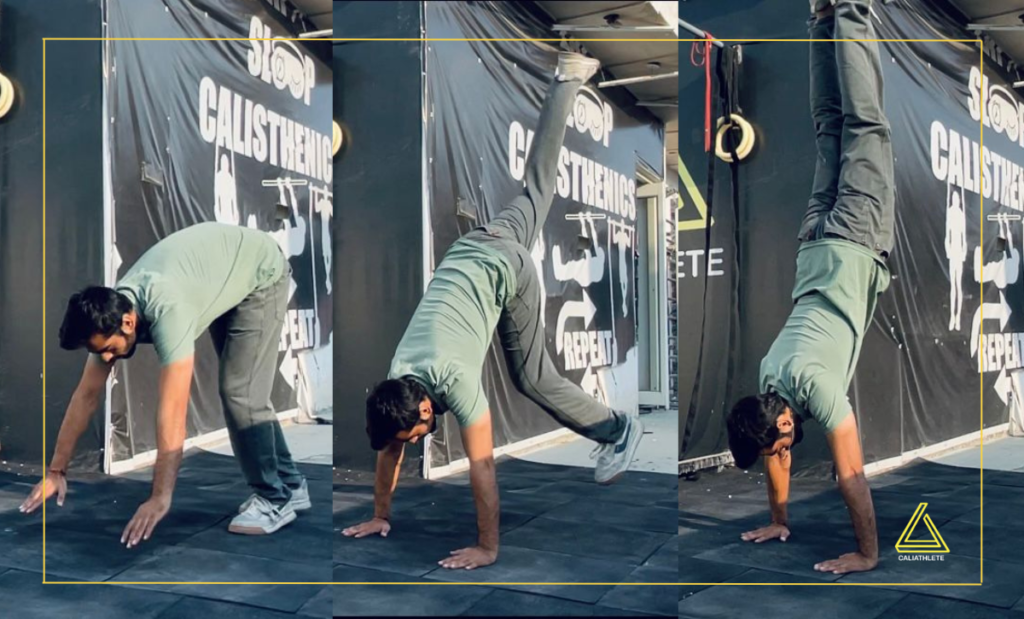
Learn to Fall Safely
- Roll Out: If you feel unsteady, tuck your chin and roll out to disperse the impact when landing.
- Twisting to Land: If you begin to fall, twist your body to land on your feet or safely step out.
Tips
Engage Your Core: Squeeze your core and focus on keeping your body straight.
Muscle Connection: Engage your muscles to make for muscle connection to control your body.
Take Rest: Take some rest after practice; don’t rush.
Keep Practicing: You cannot achieve handstand in just 1 day or week, so keep practicing.

